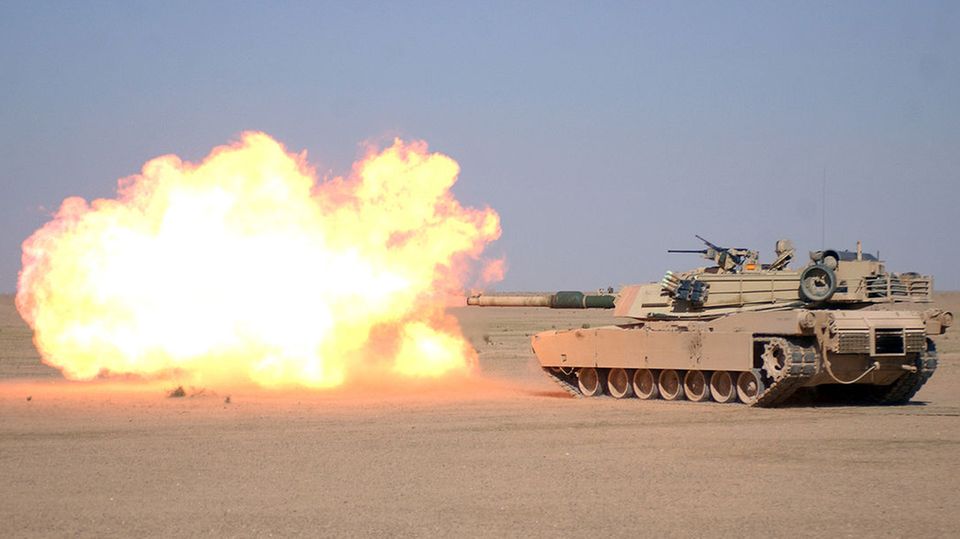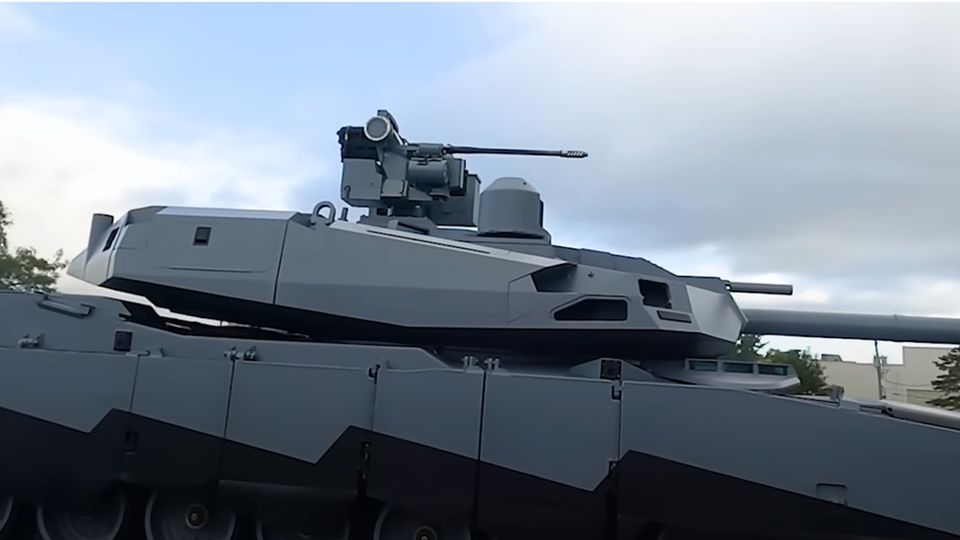Armament in China
Like Thor’s Hammer: New powerful bullet is designed to destroy tanks without breaking through the armor
The impact projectile could be fired from an electromagnetic cannon. The illustration shows a railgun as a ship’s gun.
©PLA
You don’t have to crack a tank to take it out. Chinese researchers assume that a hypersonic projectile would shake a battle tank with its kinetic energy to such an extent that important systems would fail. The tank would remain intact from the outside, but the inside would be broken.
Projectiles intended to take out armored vehicles always try to penetrate the armor. Therefore, there is an eternal battle between optimizing the armor and upgrading the projectiles. A modern battle tank is by no means protected by steel alone; its shell is made of composite materials that achieve a high level of resistance.
The bullets attempt to break through the material either with a welding beam or with an extremely hard needle. Since the introduction of composite materials, protection has achieved an advantage over the needle projectiles that battle tanks fire, forcing the use of cannons with ever larger calibers.
Hit the armor
Chinese researchers want to solve the dilemma. They are working on a powerful bullet that is only intended to impact, but does not have to break through the protection. To illustrate this, a look at the Middle Ages helps: Back then you could try to break through armor with a sword or spear and inflict a wound on the wearer. But one could also rely on the naked force of a battle hammer or ax, the impact of which would knock the opponent to the ground.
In a Chinese study, the effect of a powerful bullet was simulated, which can take out a US tank with its manageable weight of 20 kilograms and its kinetic energy alone, according to the scientists. All it takes is four times the speed of sound. That’s 4800 km/h – for comparison: the muzzle velocity of the Leopard 2’s main weapon is 1640 meters per second, which corresponds to almost 5900 km/h.
Relatively little energy is enough
The result is actually surprising because the kinetic energy is only 25 megajoules or the equivalent of 7 kilowatt hours. The energy that a fan heater burns within a few hours is supposed to be enough to knock out a 60-ton tank? The difference to a fan heater is that the energy is released within fractions of a second. The second point is that the tank is an extremely rigid construction, the material is not designed to give. The entire effect is based on the fact that the blow briefly but powerfully shakes the tank.
Huang Jie from the Hypervelocity Aerodynamic Institute of the China Aerodynamics Research and Development Center claims that the tank remains intact externally, but its interior is damaged beyond repair. Among other things, the screws that connect the devices inside to the crew’s shelter would break. The impact would exceed U.S. military safety limits. “Components at these locations have a high probability of failing due to overload damage,” the South China Morning Post quoted him as saying. The shock wave propagates through the vehicle in a complex way that creates strong stresses that lead to deformation or fractures. “The gun stabilizer handle can be shaken off, the console wiring can be completely pulled out, all connections between the fire control computer and the turret can be severed, resulting in a significant loss of firepower,” the article continues.
Hypersonic weapons are getting smaller
The research institute is part of a center for the development of hypersonic weapons. To date, hypersonic weapons have been developed to build larger missiles, usually used against high-value military targets. Now it seems possible to use this technology for simple and much cheaper weapons. The classic cannon can be further optimized, but it has its limits because the muzzle velocity of the projectile depends on the propagation velocity of the gas from the propellant charge. An electromagnetic railgun is not subject to these limitations and can reach very high speeds. You could also shoot a needle projectile with a railgun; its high speed would make it particularly effective. The advantage of the impact bullets is that they are effective even in the event of a glancing blow.
Conclusion
The study is interesting, but in practice there would be numerous problems. Cushioning materials could noticeably cushion the impact. The turret of battle tanks in particular is nowadays covered with modules that lie outside the actual armor. Here the impact would tear the “add-on box” apart, but then it would no longer have enough energy to shake the safety cell. In Ukraine, battle tanks are usually taken out by artillery or cheap drones. The potential of both is far greater than that of an elaborate railgun, which, like a battle car cannon, always relies on a direct line of sight to the target.
Source: SCMP




